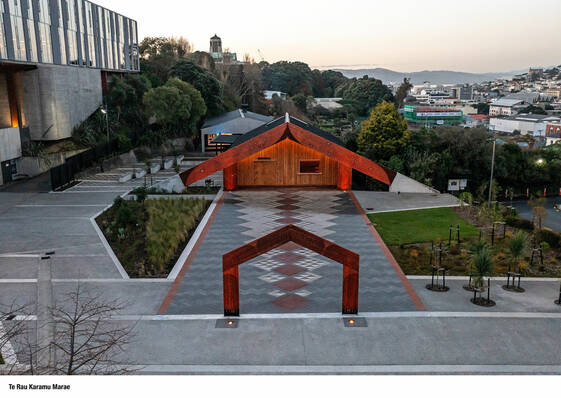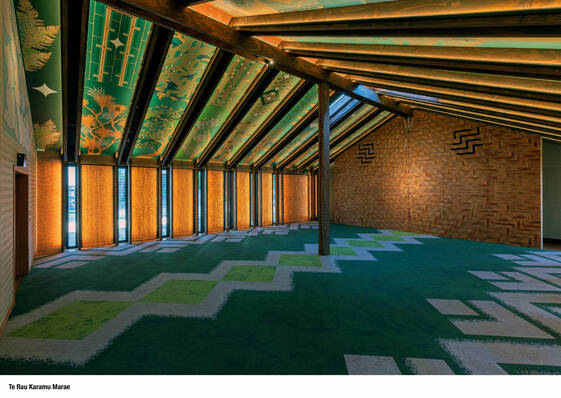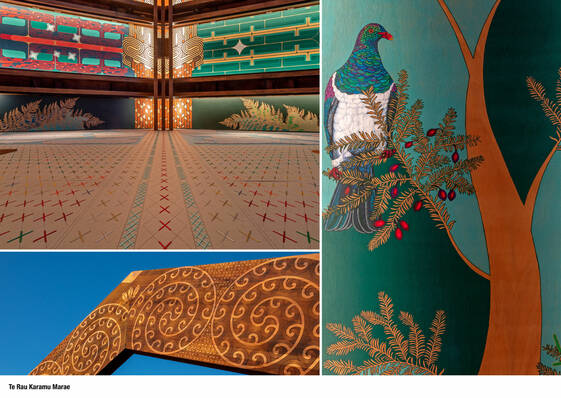The very best project in each discipline at the Best Design Awards is awarded the supreme, Purple Pin for work that truly raises the bar for New Zealand design.
Purple Pin Case Study — Toitanga
Te Kāhui Toi
Te Rau Karamu Marae & Massey University


Purple Pin 2021
Toitanga: Te Rau Karamu Marae & Massey University
Studio: Te Kāhui Toi
Judge's comments
A truly breathtaking take on what a marae can be. Flawlessly crafted with stunning detail and imagination.
Description
Te Rau Karamu Marae opened on Massey University’s Pukeahu Campus in Te Whanganui-a-Tara, 27 March 2021.
The former Kuratini Marae (1986) closed in 2015 to create a place for a new marae. To commence, tohunga guided the process through engaging kawa and tikanga, and, to set a mauri within the land, to emit the living force of infinite potential.
The design of the wharenui ‘Te Whaioranga o Te Whaiao’ relates to a defined area within Te Waonui (the forest) and focused on the roles of atua such as Tāne Whakapiripiri and Hinewaonui in the creation of Te Rakau Tipua - the cosmic tree. This speaks of the connections to all things, which may be experienced by all of those who enter under its canopy and into its embrace, in ceremony guided by the spatial narrative.

Different aspects of the wharenui whakairo (artwork) speak to the roots (backwall), the trunk (ridgepole) the branches (rafters), to the crowning canopy of the tree (exterior kauru). Visually alive, both the physicality and the mauri of all aspects of the tree, its relationships to birds, insects, waters, fire, the sun, the moon, the stars, the cosmos in relationship to wāhine/tāne atua, bring us back to our sense of belonging, to confirm our integration, to connect us to our tupuna. This environmental schema is underpinned by the vertical pou-tokomanawa — its central kaupapa pertaining to Te Tiriti o Waitangi in achieving balance and prosperity for two peoples, their environment and their future generations.
The design of the east-facing wall featuring eight doors that open out onto Te Moananui courtyard creates a further dynamic threshold. When closed, the surrounding louvre windows bring light (often refracted) and warmth into a discrete space.

The wharekai ‘Te Whaioranga o Te Taiao’ speaks of a defined zone within Te Moananui (the great ocean) and focused to the roles of the atua such as Tangaroa and Hinemoana in connecting us to the land and also the sea. Careful attention to manaakitanga resulted in quality finishes, details, materials, pathfinding and ambience alongside a challenging refurbishment in a confined area.